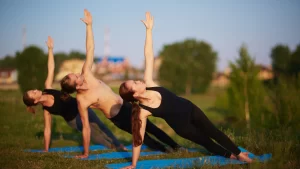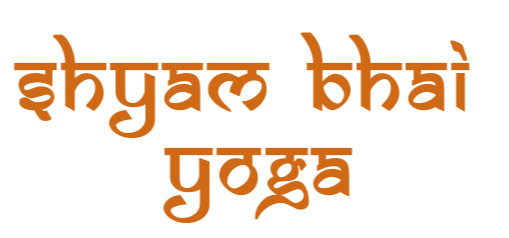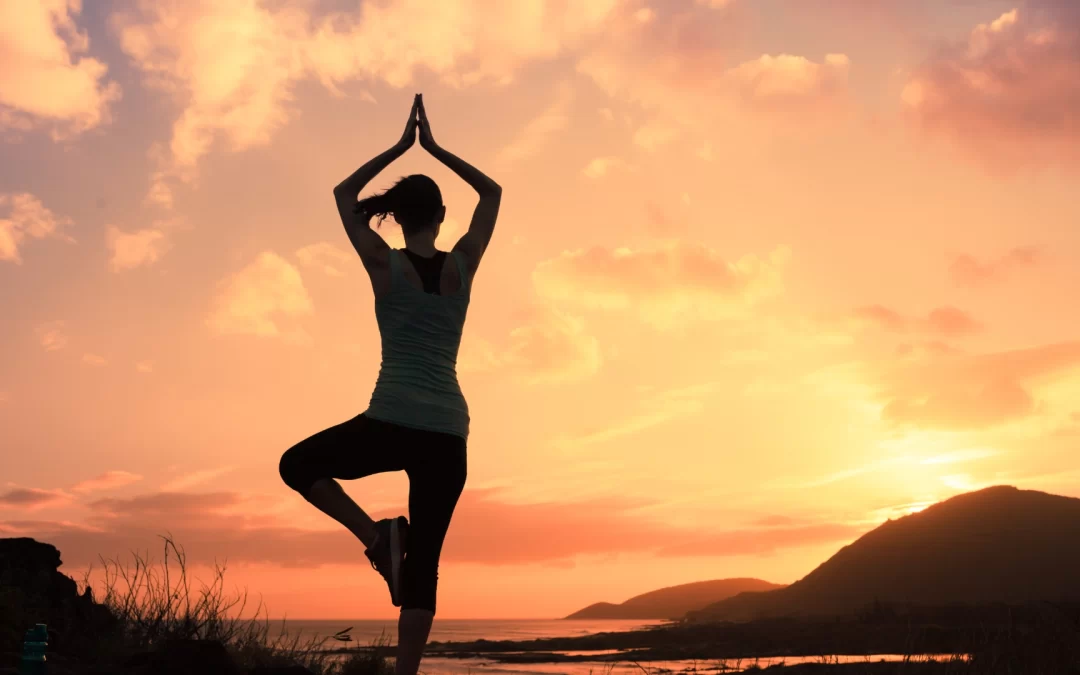What Is The Best Time To Do Yoga?
Yoga is an ancient practice that integrates the body, mind, and spirit through a series of postures, breathing exercises, and meditation. Yoga and fitness are expected to reach USD 72 billion in the Indian wellness market by 2025. Whether you are a seasoned yogi or a beginner, the timing of your practice can significantly influence its effectiveness and the benefits you derive from it. But what exactly is the best time to do yoga? This blog explores the advantages and considerations of practicing yoga at different times of the day—morning, afternoon, and evening—to help you find the optimal time for your practice.
The Benefits of Morning Yoga

1. Energize Your Day
Practicing yoga in the morning is a fantastic way to kickstart your day with energy and positivity. Morning yoga helps awaken your body and mind, preparing you for the day ahead. The gentle stretches and mindful breathing through online yoga classes boost circulation, oxygenate the blood, and enhance mental clarity.
2. Establish a Routine
Morning yoga can help you establish a consistent routine. By dedicating time in the early hours, you’re less likely to encounter distractions and interruptions. This consistency can lead to a disciplined practice, fostering long-term benefits such as increased flexibility, strength, and mental resilience.
3. Boost Metabolism
Starting your day with yoga can jumpstart your metabolism. Engaging in physical activity in the morning increases your metabolic rate, which helps in burning more calories throughout the day. Additionally, morning yoga can aid in better digestion and reduce bloating.
4. Mental Clarity and Focus
Morning yoga can significantly enhance your mental clarity and focus. The practice of mindfulness and deep breathing early in the day helps clear your mind of any lingering sleepiness or fog, setting a positive tone for the rest of your day. This mental clarity can improve your productivity and concentration at work or school.
5. Reduced Stress and Anxiety
Starting your day with yoga can be a powerful tool for stress management. Yoga encourages the release of endorphins, the body’s natural mood lifters, and reduces the production of cortisol, the stress hormone. This helps you approach your day with a calm and balanced mindset, better equipped to handle any challenges that come your way.
Morning Yoga Routine Example
Here’s a simple morning yoga poses to energize your day:
- Sun Salutations (Surya Namaskar): Perform 5-10 rounds to awaken your body and mind.
- Cat-Cow Pose (Marjaryasana-Bitilasana): Flow through 10 breaths to warm up your spine.
- Downward Facing Dog (Adho Mukha Svanasana): Hold for 5 breaths to stretch your hamstrings and shoulders.
- Warrior I (Virabhadrasana I): Hold for 5 breaths on each side to build strength and stability.
- Tree Pose (Vrksasana): Hold for 5 breaths on each side to improve balance and focus.
- Seated Forward Bend (Paschimottanasana): Hold for 10 breaths to stretch your hamstrings and calm your mind.
- Corpse Pose (Savasana): Relax for 5-10 minutes to integrate the benefits of your practice.
The Benefits of Afternoon Yoga

1. Increased Flexibility
Practicing yoga in the afternoon can be particularly beneficial for flexibility. By this time, your muscles are warmed up from the activities of the morning, making it easier to stretch deeply and safely. This can be an excellent time to work on poses that require greater flexibility and range of motion.
2. Break from Routine
An afternoon yoga session provides a much-needed break from your daily routine. Whether you work in an office, at home, or are engaged in other activities, taking a break for yoga can refresh your mind and body. This mid-day practice can reduce fatigue and improve your overall productivity for the rest of the day.
3. Improved Digestion
Yoga in the afternoon can aid in digestion, especially after lunch. Certain yoga poses can stimulate the digestive organs and help in the efficient breakdown and absorption of food. This can prevent issues like bloating and indigestion.
4. Enhanced Focus and Productivity
A yoga break in the afternoon can re-energize you and improve your focus and productivity. The physical activity combined with mindful breathing can help clear mental fog, reduce stress, and rejuvenate your mind, enabling you to tackle the second half of your day with renewed vigor.
Afternoon Yoga Routine Example
Here’s a simple afternoon yoga poses to refresh and re-energize you:
- Child’s Pose (Balasana): Hold for 5-10 breaths to relax and center yourself.
- Cat-Cow Pose (Marjaryasana-Bitilasana): Flow through 10 breaths to warm up your spine.
- Standing Forward Bend (Uttanasana): Hold for 5 breaths to stretch your hamstrings and lower back.
- Warrior II (Virabhadrasana II): Hold for 5 breaths on each side to strengthen and stretch your legs.
- Triangle Pose (Trikonasana): Hold for 5 breaths on each side to open your hips and shoulders.
- Seated Twist (Ardha Matsyendrasana): Hold for 5 breaths on each side to aid digestion and stretch your spine.
- Legs-Up-the-Wall Pose (Viparita Karani): Relax for 5-10 minutes to rejuvenate your mind and body.
The Benefits of Evening Yoga

1. Relaxation and Stress Relief
Evening yoga is an excellent way to unwind and de-stress after a long day. The gentle stretching and deep breathing help to relax your body and calm your mind, promoting a sense of tranquility and well-being. This can be particularly beneficial if you have had a stressful day or suffer from anxiety.
2. Improved Sleep Quality
Practicing yoga in the evening can significantly improve the quality of your sleep. The relaxation and mindfulness aspects of online yoga classes for better sleep help to prepare your body and mind for restful sleep. Certain poses and breathing techniques can stimulate the parasympathetic nervous system, which promotes relaxation and prepares your body for sleep.
3. Release Tension
Throughout the day, physical and mental stress can accumulate, leading to tension in the body. Evening yoga helps to release this built-up tension, particularly in the neck, shoulders, and back. This can prevent pain and discomfort, making you feel more relaxed and comfortable.
4. Reflection and Mindfulness
Evening yoga provides an opportunity for reflection and mindfulness. This is a time to process the events of the day, release any negative emotions, and cultivate a sense of gratitude. Practicing mindfulness in the evening can enhance your emotional well-being and promote a positive outlook.
Evening Yoga Routine Example
Here’s a simple evening yoga routine to relax and unwind:
- Child’s Pose (Balasana): Hold for 5-10 breaths to relax and center yourself.
- Cat-Cow Pose (Marjaryasana-Bitilasana): Flow through 10 breaths to release tension in your spine.
- Seated Forward Bend (Paschimottanasana): Hold for 10 breaths to stretch your hamstrings and relax your mind.
- Bound Angle Pose (Baddha Konasana): Hold for 10 breaths to open your hips and release tension.
- Reclining Twist (Supta Matsyendrasana): Hold for 5 breaths on each side to stretch your spine and relax your body.
- Legs-Up-the-Wall Pose (Viparita Karani): Relax for 5-10 minutes to rejuvenate your mind and body.
- Corpse Pose (Savasana): Relax for 5-10 minutes to integrate the benefits of your practice and prepare for sleep.
Personalizing Your Yoga Practice
While the time of day you practice yoga can influence the benefits you experience, the best time to do yoga ultimately depends on your personal schedule, preferences, and goals. Here are some tips to help you personalize your yoga practice:
1. Listen to Your Body
Your body’s natural rhythms and energy levels can provide valuable clues about the best time for you to practice yoga. Pay attention to when you feel most energetic and when you need relaxation and choose your practice time accordingly.
2. Consider Your Goals
Your yoga goals can also influence the best time for your practice. If you aim to build strength and flexibility, a morning or afternoon practice might be ideal. If your goal is stress relief and improved sleep, evening yoga could be more beneficial.
3. Create a Consistent Routine
Consistency is key to reaping the benefits of yoga. Choose a time that fits well into your daily schedule and commit to practicing regularly. Whether it’s 15 minutes or an hour, a consistent practice will yield more significant benefits over time.
4. Be Flexible
Life can be unpredictable, and sticking to a rigid schedule isn’t always possible. Be flexible and allow yourself to adapt your yoga practice to your daily circumstances. If you miss your usual morning session, find time in the afternoon or evening to practice. You can also opt for online yoga classes that are flexible and convenient at home. To answer any questions you may have about doing yoga at home, check out our blog post titled “The Ultimate Guide to Practicing Yoga at Home.“
5. Incorporate Different Practices
Consider incorporating different types of yoga practices at different times of the day. For example, you might start your day with an energizing Vinyasa flow, take a gentle Hatha class in the afternoon, and wind down with a calming Yin or Restorative yoga session in the evening.
Conclusion
Finding the best time to do yoga is a personal journey that depends on various factors, including your schedule, energy levels, and goals. Morning yoga can energize you and set a positive tone for the day, afternoon yoga can increase flexibility and provide a refreshing break, and evening yoga can help you relax and improve your sleep quality.
Regardless of the time you choose, the most important aspect is consistency. By making yoga a regular part of your routine, you can enjoy its numerous physical, mental, and emotional benefits. Listen to your body, be flexible with your practice, and create a routine that aligns with your lifestyle.
Inquiry
If you have any questions, please feel free to reach out. We’ll be glad to help!

